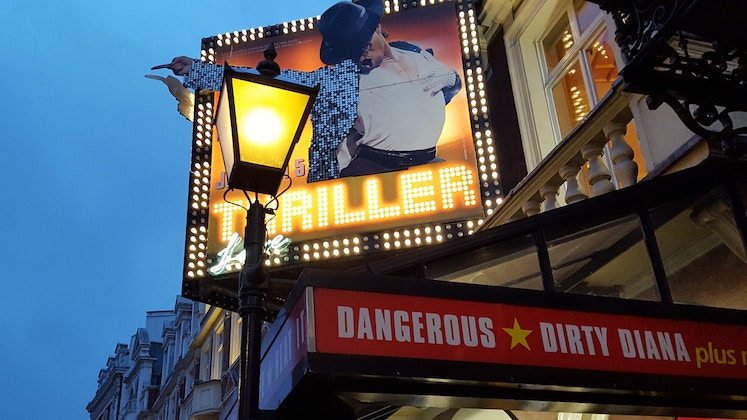A Guide to London’s Theatre History
We take a dive through the centuries and excavate the fascinating history of theatre in London.
By Charlie Walker | Updated Mar 21 2023

We all know that modern day London is a first class city for theatre lovers. But how does a city become ‘the theatre capital of the world’? As it turns out, it takes a very long rehearsal process.
The oldest traces of London’s illustrious theatre history go back to Roman times. The remains of an amphitheatre, probably built in the second half of the first century, can still be viewed today in the basement of the Guildhall Art Gallery. Fortunately our tastes have evolved a little over the centuries; the original programming would have consisted mostly of wild animals fighting each other and criminals being executed.
The first permanent playhouses to be built after the amphitheatre came with the Reformation. One of the earliest ones was a 1576 venture by James Burbage, who gave his venue the inspired name The Theatre. A year later and 200 yards down the road, The Theatre would get competition from The Curtain. While the remains of the first venue are currently locked away on an inactive building site, The Curtain has recently made the news again. In 2011 archaeologists discovered its remains on the site of soon-to-be luxury apartment complex The Stage. Excavations are currently in progress, and free site visits are available until 24 June. After that date, the site will be covered over again until the planned visitor centre is ready.
While The Curtain may seem to have taken the day, The Theatre does have a very cool backstory up its sleeve. In December 1598, after a long dispute with their landlord, James’ son Richard and company dismantled the entire playhouse in a single night and rowed the wooden beams across the Thames, where they would come to make up the one and only Globe. The foundations of that theatre can be seen today, outlined in the car park of the not particularly photogenic Anchor Terrace flats. Since the flats are listed, the Globe’s foundations can not be further excavated, so Shakespeare aficionados will have to make do with a night out at the nearby Shakespeare’s Globe. If that’s not quite authentic enough, there’s also The Rose Playhouse just across the road from Anchor Terrace. The remains of The Rose are currently protected by what’s best described as an indoor lake. Plays by Shakespeare and his contemporaries are still regularly performed on the adjacent stage. Half theatre and half archaeological dig, a visit to The Rose is not the most comfortable experience ever (there are no toilets, for example), but it certainly makes for a memorable night out.
The Globe Interior, 2014, Photo © John Wildgoose
Of course, there’s more to London theatre than Shakespeare. The city also has a strong claim to fame in having the oldest theatre in the world that’s still in use today. The current Theatre Royal Drury Lane is the fourth one occupying the same site in Covent Garden, the first venue having opened there in 1663. Many famous theatre folks have tread its boards, among others London’s first real female actress (not a boy in a skirt), Nell Gwynn, actor-manager David Garrick and one of the founding fathers of the pantomime and the clown Joseph Grimaldi. Grimaldi, incidentally, is still honoured in an annual memorial service at the Holy Trinity Church in Hackney, which is always attended by hundreds of clowns from all over the world, all in full costume. Other venues worthy of mention here are Sadler’s Wells (1683) and the Theatre Royal Haymarket (1720). The latter has the slightly dubious honour of being the first theatre to put on matinee shows, thus setting the precedent for centuries of children’s birthday parties ruining everyone else’s Saturday afternoon at The Lion King.
Jumping forward into the nineteenth century and the era of the music hall, Wilton’s Music Hall is one of very few original venues surviving in the UK. Extensive renovations finished last year, but the interior does still look like it would have in the days of music hall legends like Dan Leno and Marie Lloyd.
And next? Well, there are definitely plenty of twentieth century theatres in operation today that will without doubt become fixed in London’s theatre history. Whether it’s the National Theatre with their production of Jerry Springer: The Opera and its alleged 3,168 mentions of the word ‘fuck’ or the 64-years-and-counting run of The Mousetrap at the St Martin’s Theatre, there’s always something going on in London. Here’s to the next 2,000 years.